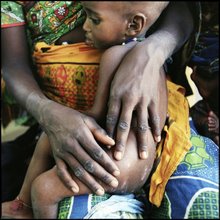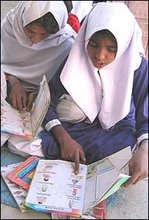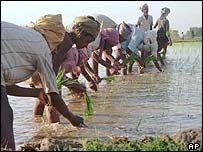PREAMBLE: “Sex ratio” (SR) refers to the ratio of males to females (M:F) in a population. Due to higher life expectancy of females in most populations, SRs tends to decline across adult age groups. Values for the world population are: overall 1.01; at birth 1.06; under 15 years still 1.06; 15-64 = 1.03; and >65 years = 0.79.
We are focusing on this topic because dramatic shifts in sex ratio are taking place in some parts of the world that reveal cultural preferences and social practices favoring the birth/survival of one sex over the other (more often favoring males over females). Other factors influencing the sex ratio of societies include: changing composition by ethnicity and race; civil unrest or warfare; large-scale immigration e.g., male labourers unable to travel with their families; ecological factors eg contaminants in environment; variables affecting mother’s health eg social status, smoking, nutrition, access to support networks.
Our main source for this issue is an analysis carried out by the United Nations Population Fund (UNFPA) which we have summarized below. Further below, we offer a brief commentary, and some focused observations pertaining to India and China.
Feature Report: SEX RATIO IMBALANCES IN ASIA: TRENDS, CONSEQUENCES AND POLICY RESPONSES.
Asia’s population dynamics in recent decades reveal an alarming increase in the sex ratio (SR) within local populations. The ratio at birth (SRB) started to increase in East Asia from 1980-85, and in South-Central Asia from 1985-90, while elsewhere in Asia, SRBs remained relatively constant. In some regions, the SRB exceeds 1.30 e.g., Guangdong and Hainan in China. There are also variations in SR levels within each country in Asia, as well as between religious, ethnic and socio-economic groups; these have been well studied in India. Since, generally, the SR overall has remained relatively stable in Asia, the growing contribution of the younger generation to the growing SR imbalance has offset the opposite progress in SR being made by adults, among which mortality improvements have particularly benefited the female population.
The rise in SRB is linked to the introduction of pre-natal sex selection in many Asian countries following the arrival of ultrasound and amniocentesis technologies in the late 1970s. The deeply rooted preference for sons in Asia is related to a long list of demand factors such as social customs, marriage costs, old-age support, leading parents across cultures and geographic locations to decide against allowing a girl to live, even before her birth. Indeed, if the continent’s overall SR was the same as elsewhere in the world, in 2005 Asia’s population would have included almost 163 million more women and girls.
The ramifications of such an imbalance will continue for decades. While men of marriageable age will suddenly find a dramatic shortage of potential brides, it is girls and women of all ages who will truly feel the brunt of this dynamic, with forecasted increases in gender-based violence, trafficking, discrimination and general vulnerability of women and girls. The main question now concerns the intensity and tempo of the sex-ratio transition in relation to spontaneous social and economic changes, and to government actions. These are, to a large extent, the dimensions that will determine the severity of the crisis, and the overall number of men, women, boys and girls affected.
Key Conclusions:
• The sex ratios of Asian countries are in various phases of transition.
• Gender discrimination, son preference and the resultant unequal status of women and
girls have contributed to an in increasing demand for sex-selection services.
• In many regions, several generations will be affected by a severe marriage squeeze,
regardless of what is done today.
• Initiatives taken today will shape Asian societies in which future generations will live.
The Way Forward:
• Improve monitoring of trends and differentials in SRB and related discriminatory behaviours.
• Coordinate research on the harmful impact of imbalanced SRs already observed in Asia.
• Make eliminating sex selection an immediate priority for government and civil-society
organizations.
• Facilitate sharing of policy experiences across regions and countries in Asia.
• Develop strategies and interventions for greater engagement and accountability by
men and boys in confronting violence against women (including sex selection) and for promoting gender equality, women’s sexual and reproductive health and rights.
Reference: Sex-ratio Imbalance in Asia: Trends, Consequences and Policy Responses. Executive Summary of Regional Analysis. 4th Asia Pacific Conference on Reproductive and Sexual Health and Rights. Oct 29-31, 2007 Hyderabad, India. UNFPA.
http://www.unfpa.org/gender/docs/studies/summaries/reg_exe_summary.pdf
COMMENTARY: Although many factors influence sex ratios, women’s education is the most powerful factor in reducing son preference. Educated women are less likely to prefer sons over daughters, and highly educated women even less so. Women’s exposure to primary-level schooling reduces son preference, and exposure to secondary-level education or higher is even more profound. Moreover, how many women are educated matters: women in villages with higher levels of female literacy are less likely to prefer sons than women in villages where most women are illiterate. Greater exposure to media is associated with weaker son preference, even after controlling for education and wealth.
India [1]: One of the biggest concerns in India with regard to son preference is that decades of policy efforts have not achieved positive change, and worsening sex ratios indicate a deteriorating situation. Most government policy related to son preference has focused on reducing sex-selective abortion, but it also important to address the underlying parental motivation. One important source for policy inspiration on this issue would be to better understand the motivations and social norms of women and communities who do not express son preference. Attention needs to be focused also on what is happening to surviving girls i.e., their health and nutritional discrimination. A specific category of surviving girls is much more vulnerable than the rest - girls with older sisters.
China [2]: Chinese authorities have pledged tough measures to control fetus-gender testing and sex-selective abortions, warning that people who illegally test the gender of fetuses and perform sex-selective abortions or who kill, abandon or injure infant girls or ill-treat their mothers, will be severely punished. Medical procedures that use ultra-sound technology to check fetal health will be more closely supervised. In an attempt to halt the growing imbalance, a "Care for Girls" campaign was launched nationwide in 2000 to promote gender equality. Cash incentives are offered to girl-only families in the countryside. Authorities also pledged to continue the 33-year-old family planning policy, as the country still faces huge challenges from a growing population. Formulated in the early 1970s, the family planning policy encourages late marriages and late childbearing, and limits most urban couples to one child and most rural couples to two. The policy is credited with preventing 400 million births but faces a challenge in rural regions, where the traditional preference for male heirs has not changed. The authorities promised to continue to improve family planning services in rural areas and help girl-only families.
References:
1. Son Preference and Daughter Neglect in India. What happens to Living Girls? Rohini Pande and Anju Malhotra. 2006 International Center for Research on Women.
http://www.icrw.org/docs/2006_son-preference.pdf
2. Rising sex-ratio imbalance ‘a danger’. Xinhua, China Daily. Updated: 2007-01-23 07:16. http://www.chinadaily.com.cn/china/2007-01/23/content_789821.htm
FROM a Great Canadian and World Statesman
"A great gulf... has... opened between man's material advance and his social and moral progress, a gulf in which he may one day be lost if it is not closed or narrowed..."
Lester B Pearson
http://nobelprize.org/nobel_prizes/peace/laureates/1957/pearson-lecture.html
Tuesday 15 April 2008
Subscribe to:
Posts (Atom)
INSPIRATIONAL WELCOME ............................... from T.S.Eliot's "Little Gidding"
If you came this way From the place you would come from... It would be the same at the end of the journey...
If you came, not knowing what you came for, It would be the same... And what you thought you came for Is only a shell, a husk of meaning... From which the purpose breaks only when it is fulfilled If at all.




















